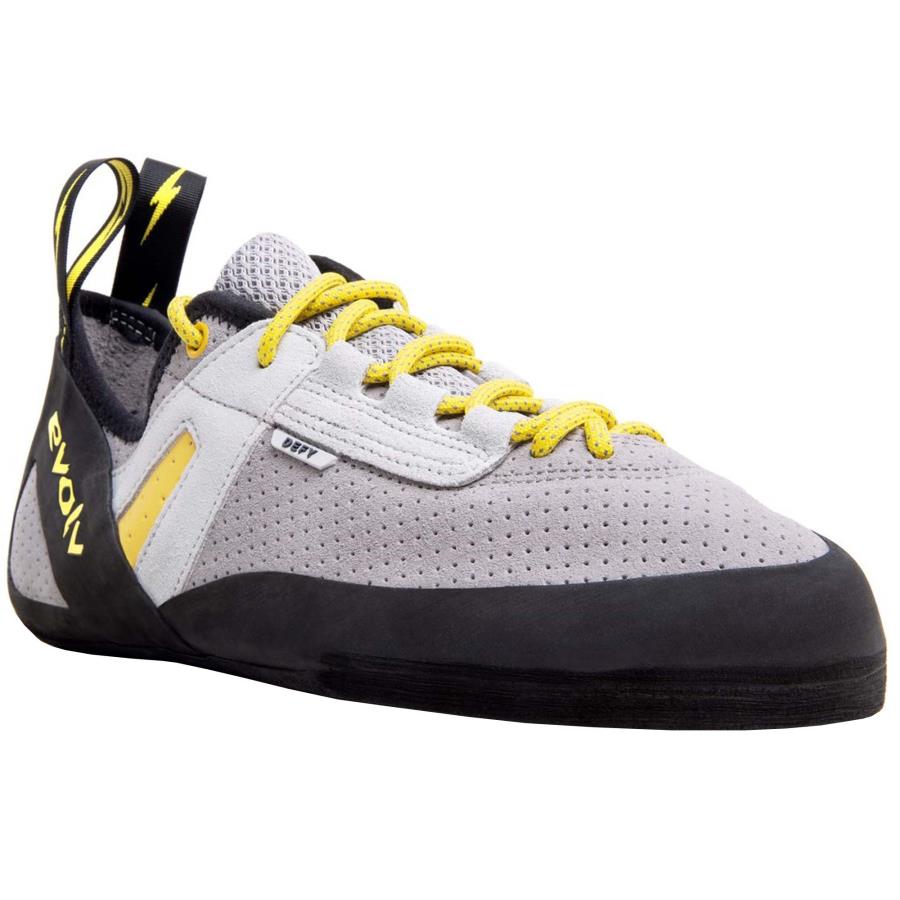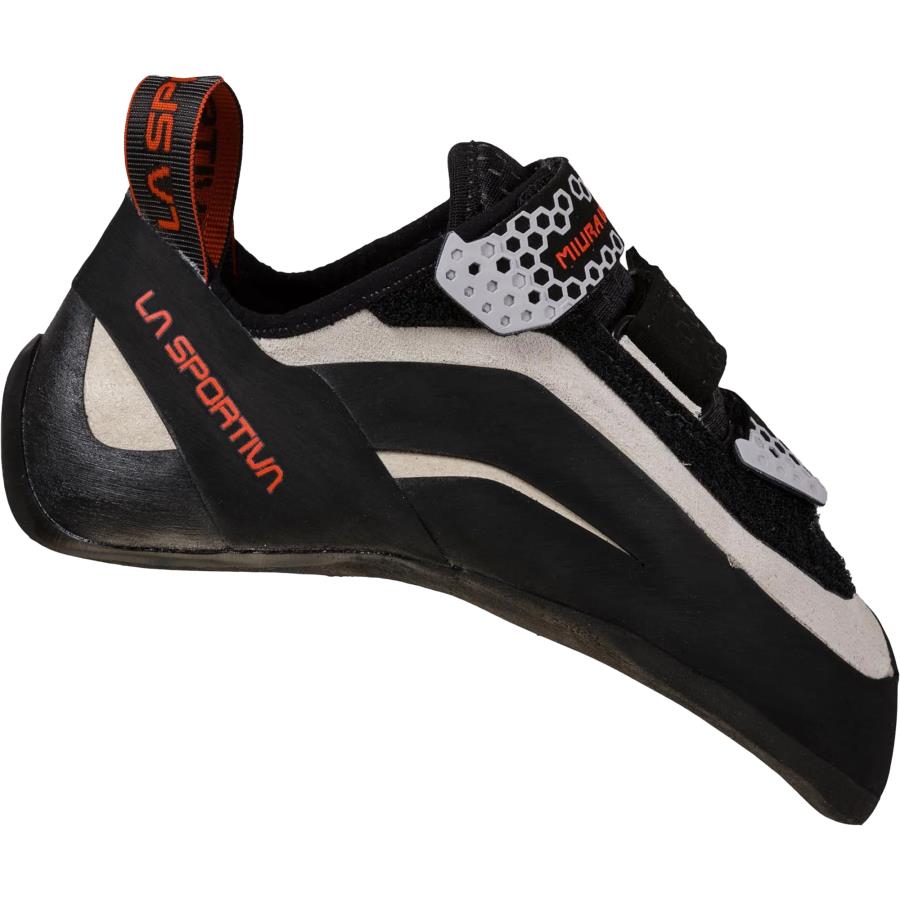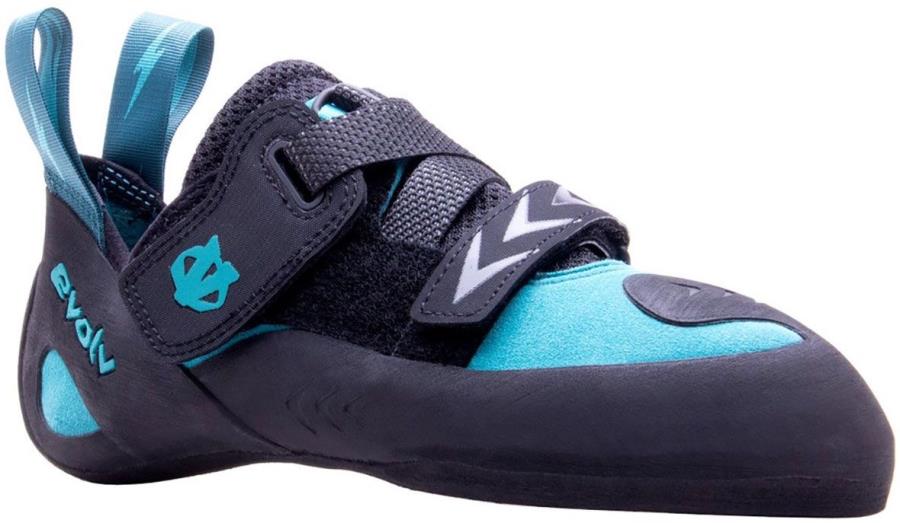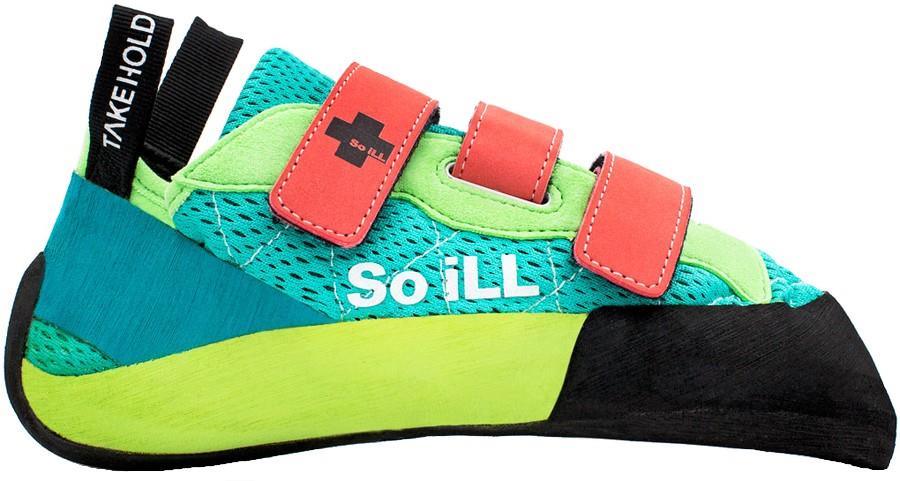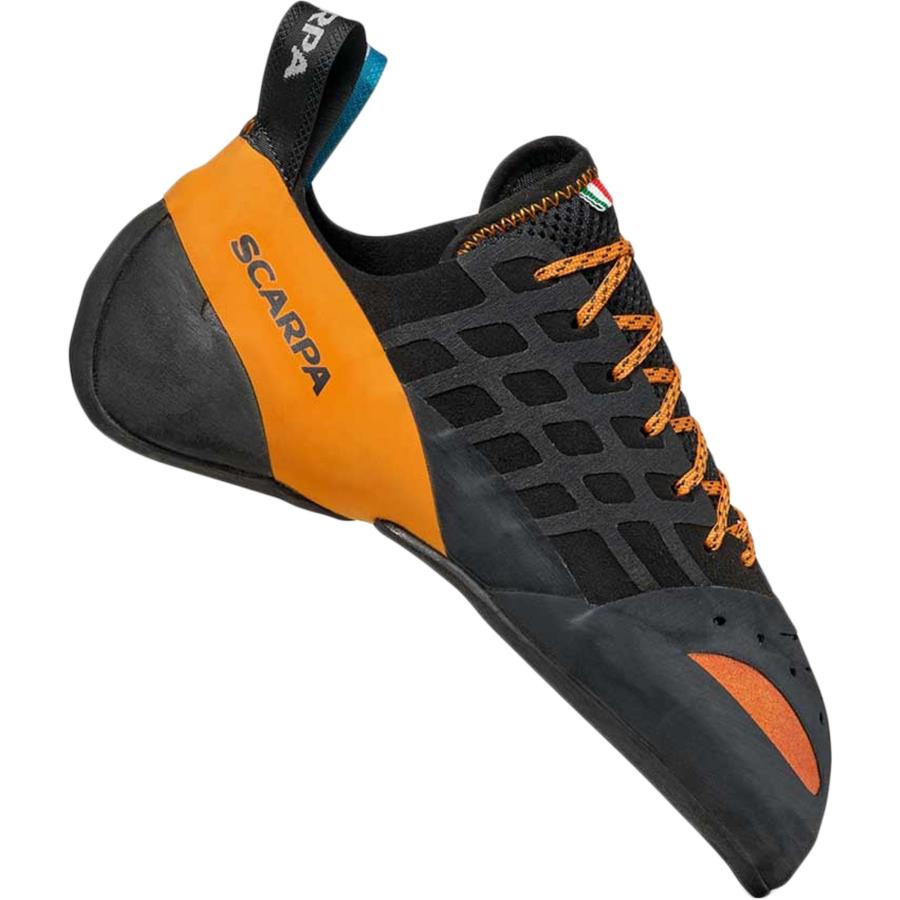What type of rock climbing shoe is right for me?
Rock climbing shoes can be split into three simplified categories which can serve as a general reference point. Some climbers might have more than one type of climbing shoe depending on what kind of climbing they are doing.

Great for beginners, comfort shoes are designed to be worn all day long with minimal discomfort. They tend to have a straight last, meaning a relatively flat camber which will put the foot into a more relaxed position than other shoes.
This is great for new climbers to find their footing without worrying about their feet being contorted into unfamiliar shoes whilst still receiving all the benefits of a sticky rubber shoe for better grip on the wall. Look for a slight curl in your toes to maximise performance without compromising comfort.
These types of shoes are by no means limited to new climbers, you will find many advanced climbers pick out a flat-lasted shoe for longer climbs and crack climbing - they will tend to downsize the fit to gain a more technical edge.
All-around shoes are the jack of all trades, they can handle slabby routes, crack climbs, multi-pitch routes and slightly overhung sport routes. They are a solid choice for climbers who have the basic foot technique covered and are looking to push for a higher grade.
They also lend themselves well to advanced climbers as a training shoe before putting on their aggressive performance shoes on to nail a project.
An intermediate shoe can be classed as an all-around shoe. They generally have a slightly downturned shape which puts your feet in a more powerful position to control placements on more challenging routes. Intermediate shoes tend to have stickier and thinner rubber than beginner shoes for better grip and sensitivity on the rock.
Performance shoes tend to have a visibly cambered or downturned shape which bends downwards at the arch towards the toe. They are designed with plenty of tension at the heel. This combination puts your feet in a strong, powerful position. Normally aggressive shoes are paired with an asymmetric last, bending the foot into a banana/claw-like shape. This shape encourages power to be transferred seamlessly from your leg to your forefoot for better control on tiny holds and overhangs. More often than not, these shoes will not be the most comfortable so it is not uncommon to see climbers take them off in between climbs.
Lower volume climbing shoes simply refers to shoes that are narrower and/or have a smaller heel shape. Most climbing shoe manufacturers design lower volume shoes with womens foot shapes and therefore they are often labelled as ladies climbing shoes. However, just like women can wear mens climbing shoes if they fit better, men regularly opt for womens climbing shoes if they have narrower feet. For all intents and purposes, all climbing shoes are unisex, just like your favourite cat memes: If it fits, I sits.
Kids climbing shoes are made with rubber soles just like their adult counterparts to provide better grip for your children on the wall than their ordinary trainers. They are designed to cater to a childs growing feet and therefore do not have any camber in them at all so as to not damage a growing foot.Knowing that children's feet are constantly growing, some manufacturers address this by designing kid's shoes to spread over two sizes. They do this by either including an extra insole to tighten the fit or a pull tab at the heel to bring the whole foot forward, as your child's feet grow, these can be removed or loosened to fit.
Each of the above climbing shoe category types will come in one of three closure systems. We have outlined the key differences and benefits of each below.
Traditional laces are the purists choice! They are just like the laces on your favourite trainers and the laces can be easily replaced if necessary.
The benefits of a lace-up climbing shoe are that you can fully customise the tightness of the shoe at different points to accommodate the shape of your foot. It offers the most adjustable, supportive and reliable fit every time.
The only downside compared to the other options is that it is also the most time consuming to put on and take off.
Velcro closures, aka 'rip-and-stick' and 'hook-and-loop' are the practical speedy choice, they offer a quick on/off transition.
This is particularly convenient when bouldering or gym climbing to allow your feet plenty of breathing room between climbs and belays duties. Velcro strapped climbing shoes tend to come with one single strap, two straps or three straps.
The more straps a shoe has the more dialled in your foot will be. You may find that some straps will close in alternate directions to offer a really even closure. The trade-off between velcro and lace-ups is that you don't get full-length adjustment options on velcro shoes, you can only tighten or loosen the areas with velcro support.
Climbing slippers, or slip-on climbing shoes in the rawest form have no closure system at all. They rely on elastic and a vacuum fit. Some of the slip-on shoes that we have in stock are a bit more of a hybrid between velcro and slippers; they have one velcro closure towards the top of the shoe for a nice tight fit whilst the rest relies on the elasticated vacuum fit. These are incredibly comfortable and technical when they do fit due to a reduced chance of pressure points. Slip-ons are best for training, bouldering, sport climbing and working your way up thin cracks.
Check out our full range of Climbing Shoes today!
Explore Our Latest Climbing Shoes
Need further advice? We're here to help!
Check out our Buying Guides for technical tips and tricks.
Visit our Help Centre to speak to our experts.
